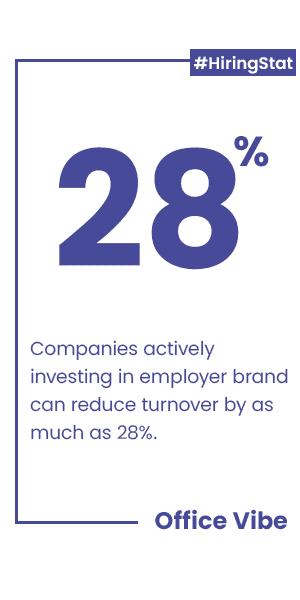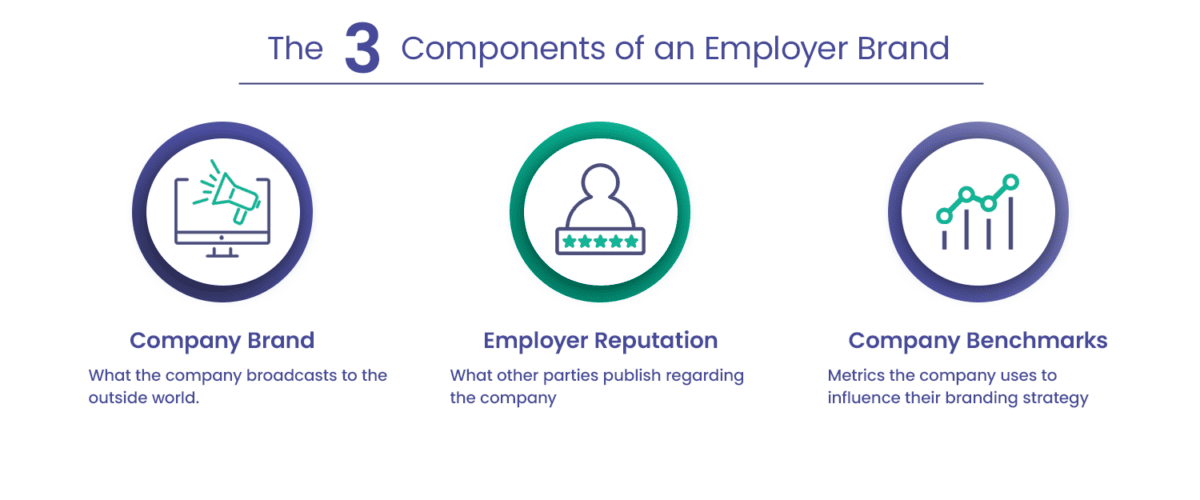In the realm of recruitment, first impressions matter immensely. A firm handshake has long been regarded as a symbolic gesture of confidence, professionalism, and mutual respect. However, there are occasions when a handshake can go awry, leaving a negative impact and ending a new relationship quickly.
Metaphorically, your employer brand is your company’s handshake. And while we all hope that our employer branding strategy conveys a message that is warm and inviting, it could be sending a message that is cold and clammy.
Your employer brand is an amalgamation of three separate components. These are your company brand, your employer reputation, and your company benchmarks. These three components carry equal weight in determining the health of your employer brand. Below is a more in-depth look at each of these components.
the health of your employer brand. Below is a more in-depth look at each of these components.
Your company brand is any message that your company communicates to the outside world. This can include your Employer Value Proposition (EVP), company culture, mission statement, graphic elements, career page, press releases, and social media. This brand messaging can be distributed through many different channels with external and internal communications.
Often, the company brand is where employers concentrate most of their efforts. The reason for this is that the company has direct control of their company brand. Through this brand, any company can introduce and market a positive company culture to external audiences and job seekers.
While your company brand is what you communicate about your company, your employer reputation is what internal and external parties say about your company. Your employer reputation is controlled through company reviews, awards, accolades, ENPS scores, third-party rating sites, and social networks.
While some of these channels do not provide a way in which a company can respond to this collective feedback, there are ways for employers to influence their company reputation by cultivating a positive company culture and work environment.
Your benchmarks are the factors you use to grade your engagement from employees, hiring managers, and potential candidates. These metrics can include how you grade the quality of the candidates that apply for open positions, the employee referral rate, engagement on different social channels, offer acceptance rate, and other expressions of interest.
How you collect and use this data directly correlates to the health of your employer brand.

Your employer brand is your first impression, and no company can afford to broadcast a bad image to the workforce. In today’s competitive job market, where talented individuals have multiple options, a compelling employer brand can differentiate you from your competitors, helping strengthen your workforce.
A previous study conducted by LinkedIn found that 69% of job candidates would reject offers made by companies with LinkedIn; it was found that 69% of job candidates would reject offers made by companies which had a bad employer brand, even if they were currently unemployed. This statistic has continued to rise as public opinion toward companies is shaping those companies’ ability to attract and retain talent long term.
The bottom line is that a good employer branding strategy will quickly move the needle in the right direction.
A great employer brand is the result of a carefully planned and well-executed top-down approach. This approach involves the decision-making process of determining the employer brand being solely the responsibility of the executive level within the organization.
Once the executive level has made the decision on the employer brand, it is then implemented through a collaborative team effort. The team responsible for communications and recruitment plays a crucial role in bringing the employer brand to life. They work together to develop strategies and tactics that effectively communicate the desired employer brand to both internal and external stakeholders.
The team responsible for communications takes on the task of crafting compelling messaging that accurately represents the employer brand. They ensure that the brand messaging is consistent across various channels, such as the company website, social media platforms, and job advertisements. This consistency helps to build a strong and recognizable employer brand image.
Simultaneously, the recruitment team uses the employer brand as a guiding principle in attracting and selecting top talent. They incorporate brand messaging into job descriptions, career websites, and recruitment campaigns to attract candidates who resonate with the company’s values and culture. By aligning the recruitment process with the employer brand, the organization can attract candidates who are more likely to be a good fit and contribute positively to the company’s success.
Companies looking to create a strong employer brand will need to work with current employees to understand if their company brand matches their employer’s reputation and benchmarks. As they roll out different initiatives to create a great workplace, employees’ feedback will act as a proper sounding board to understand where they have room for strategies that attract top talent.
Improving employer branding is essential for attracting and retaining top talent. Here are three simple ways employers can enhance their employer branding:
SmartSearch users have a unique advantage when creating or improving their employer brand. Our Candidate Relationship Management (CRM) tool offers a centralized platform for communication, allowing you to connect with candidates effortlessly, provide timely updates, and create meaningful engagement throughout the recruiting process. With our built-in brand controls, different departments can work to convey that your company is a great place to work.
SmartSearch also allows you to set and track your benchmarks with comprehensive analytics and reporting, giving you valuable insights into whether your employer brand creates an inviting environment.
If you’d like to experience the benefits of an optimized talent acquisition strategy, get in touch with one of our team members.